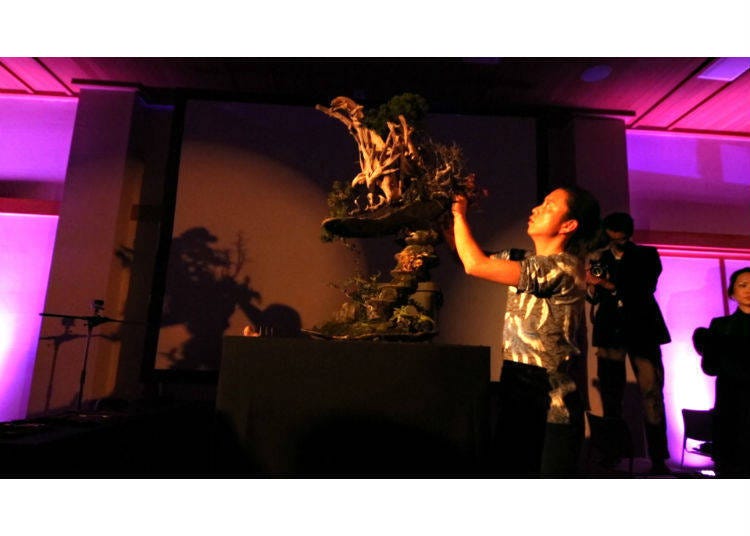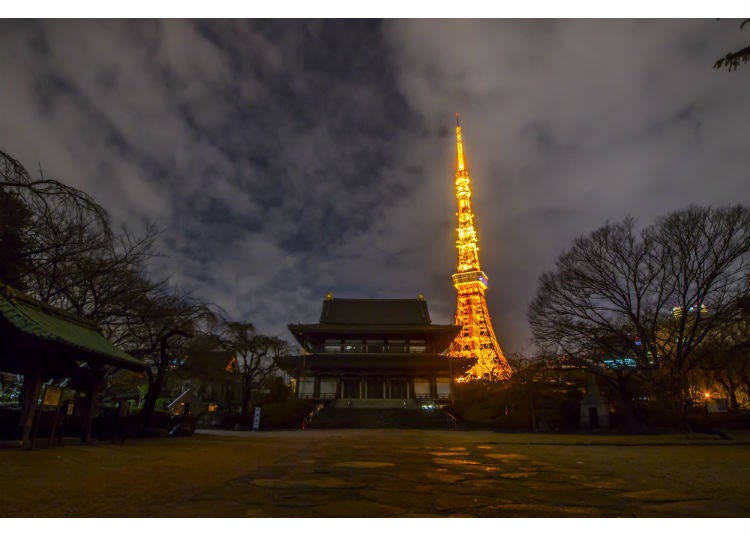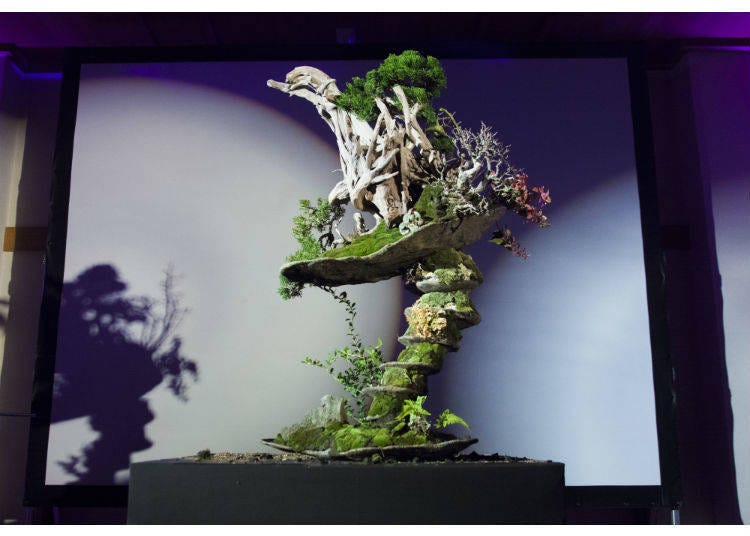![[MOVIE] Masahi Hirao’s Bonsai Performance – A Modern Take on Traditional Japanese Culture](https://rimage.gnst.jp/livejapan.com/public/article/detail/a/00/01/a0001111/img/basic/a0001111_main.jpg?20180709112315&q=80)
Everyone knows bonsai: the little, elegant trees from Japan that have long since conquered the hearts of many a fan all around the world. The kanji with which the term ‘bonsai’ is written mean “tray plant” – a very fitting name, seeing that a bonsai really is a plant sitting in a tray. The roots of bonsai reach deep into history, dating back around 1,200 years to a Chinese art called bonkei, or miniature landscaping. From China, this art of replicating a natural scenery on one tray has been brought to Japan, where it involved into its very own form of art that is known as bonsai today.
In Japan, the art of bonsai had the reputation of being a passionate hobby of especially elderly people for a long time. Recently, however, bonsai was greatly influenced by the international attention paid to the art, and young growers have started to challenge old standards and infused bonsai with fresh, creative ideas and expressions. One of those growers is Masahi Hirao. He studied under one of Japan’s greatest bonsai masters, the late Saburo Kato, inheriting his mentor’s strong desire to show the world the many charms of bonsai. Thus, Masahi Hirao follows this path by hosting various bonsai showcase events and workshops all around the world. Among those events is his bonsai performance, an enigmatic show that overcomes and overturns the common understanding of the miniature trees while showcasing Masahi Hirao as a creator. On the 24th of February 2017, one of his performance events was held at Zojo-ji, a temple close to Tokyo Tower. We were lucky enough to be part of it.
Unconventional Bonsai Art that Challenges both Japan and the World

Zojo-ji, the event venue for Masahi Hirao’s bonsai performance, is itself a very special and popular place, highlighting both the contrast and the harmony of Japan’s history and Japan’s glitzy modern wonders, represented by Tokyo Tower stretching towards the sky right behind the temple. Such a location seems perfect for the bonsai performance and Masahi Hirao’s efforts to breathe new, modern life into an old art. Thus, one corner of the temple grounds was crowded with media correspondents, various bloggers, models, and artists, with all eyes being on Masahi Hirao himself. This particular event was held to celebrate the airing of TV Tokyo’s documentary “BONSAI MEETS THE WORLD” on the Malaysian National Broadcasting Station, a documentary that is closely related to Mr. Hirao’s international efforts.
“We want to tell the world of the many charms of bonsai, and we created this documentary to reach even more people” said Yo Umezaki, the director of the movie, while Masahi Hirao explained: “Japan basically reverse-imported the bonsai fever from abroad. Now, if this movement is used in a good way, it would solve the problem of lacking growers.” This piques our curiosity for the documentary even more.

After a preview of BONSAI MEETS THE WORLD, Masahi Hirao’s performance started, the main event of the day. Various trays, the base of every bonsai, were stacked in layers on top of each other. By looking at this alone, you could immediately see that Masahi Hirao’s take on bonsai was a unique one. From the base of this creation that resembling the spine of a giant, fantastical creature, he started filling the trays with soil rapidly before planting small trees one after another. The audience carefully, curiously watched where the bonsai master would plant the next shrub. Because of the speed and unpredictability of the performance, it was almost as gripping as watching a sports game. This 30-minute bonsai show is part of the documentary, and we urge you to experience it for yourself!

In the end, the bonsai creation evoked the feeling of standing in front of a massive tree in the middle of a wild forest. It seemed to be full of old stories, its branches stretching towards the sky in a complex construction of branches, twigs, and stems. After the performance was over, Masahi Hirao’s did seem a bit exhausted after the exhilarating show, but he seemed to have shaken off the stress and to quite enjoy himself as he was talking to the many visitors of his event. We took our chances and tried to ask him a question or two!
LIVE JAPAN: Is there an aspect that is particularly difficult when doing your bonsai performance?
Masahi Hirao: It may look simple on the first glance, but I actually work based on the traditional techniques of bonsai. Performing under light and with music, you become somewhat frantic, and on one hand side, you often create something better than expected. On the other hand, you look at it afterwards, and think “I should have done more.” Controlling myself while fully diving into the performance, that is the hardest part for me.
LIVE JAPAN: What kind of things to you want to tell the world through bonsai?
Masahi Hirao: That has got to be the magnificence of Japanese culture. Bonsai is a tradition that first came from China, and Japan transformed it with its own style into something very unique. This Japanese characteristic, to take something and infuse it in its own, special way, is what I want to show the world.

It took about 1,200 years until bonsai was shaped by Japan and its culture into what we know it as today, starting with bonkei from China. How will the old tradition of bonsai develop from hereon, with both international influences and modern growers like Masahi Hirao? We are sure to keep an eye on both the little trees as well as bonsai master Masahi Hirao.
- Area
- Category
*Prices and options mentioned are subject to change.
*Unless stated otherwise, all prices include tax.
Popular Tours & Activitiess
-

2025 Japan Autumn Color Report: Tokyo's Ginkgo Trees Starting to Glow
by: Timothy Sullivan
-

Don't Miss Out! The One Thing You Must Do Before Shopping at Mitsui Shopping Park LaLaport: Get Your Max 10% OFF Coupon Book
-

Enjoy Japan's Gorgeous Winter Lights! Ride the Romancecar to Shonan no Hoseki Illumination
by: Guest Contributor
-

Get Ready to Catch 'Em All! First Ever Permanent Outdoor Pokémon Park Opening Near Tokyo!
-

See Asakusa and Tokyo Skytree® in a New Light at the "Také Akari" Festival (Winter 2025-2026)
by: Guest Contributor
-

2025 Autumn Colors Report: Kurobe Gorge Nearing Peak
by: Timothy Sullivan
Inspiration for Accommodations
-

Enjoy Mt. Fuji from the Comfort of Your Room! Recommended Ryokan with Mt. Fuji View
-

Stay Near the Cherry Blossoms! Hotels for Cherry Blossom Viewing in Tokyo
-

Family-Friendly Hotels with Free Shuttle to Disneyland: Convenient Access for a Magical Stay
-

Top Ranked Hakone Hotels with Mt. Fuji View: Enjoy Stunning Scenery from Your Private Space
-

Convenient Tokyo Hotels with Airport Shuttle: Ideal for Families and Heavy Luggage
-

Stunning Tokyo Tower View Hotels: Enjoy Spectacular Scenery from Your Private Space
-

Convenient Asakusa Hotels with Kitchens: Ideal for Extended Family Visits
-

Experience Luxury: Hakone's 10 Best Five-Star Accommodations
-

Enjoy Mt. Fuji Autumn Leaves! Top Hotels Near the Popular Autumn Leaves Corridor
-

Experience Hakone Fall Foliage from Your Room with Stunning Views
-

Tokyo Tsukiji|Tsukiji Area Map & Sightseeing Information
-
Ad

(Event Report) Spark New Discoveries in Delicious Hokuriku Regional Cuisine: Meet the Next Generation of Chefs Exploring New Frontiers in Japanese Dining Culture
-

Ikebukuro Station Area Guide: Top 15 Spots When You Escape the Station's Maze!
-

Exploring Tokyo Station: 11 Must-Visit Spots Around the Heart of Tokyo
-

All About Kimono: Designs, Patterns, Where (and How) To Buy!
-

This Awesome Tokyo Experience Will Make You Fall in Love with Japanese Music
by: David McElhinney
- #best ramen tokyo
- #what to buy in ameyoko
- #what to bring to japan
- #new years in tokyo
- #best izakaya shinjuku
- #things to do tokyo
- #japanese nail trends
- #what to do in odaiba
- #onsen tattoo friendly tokyo
- #daiso
- #best sushi ginza
- #japanese convenience store snacks
- #best yakiniku shibuya
- #japanese fashion culture
- #best japanese soft drinks


















